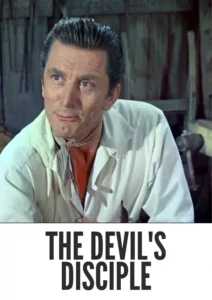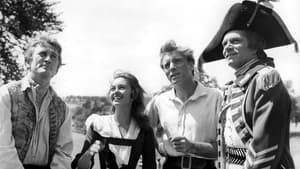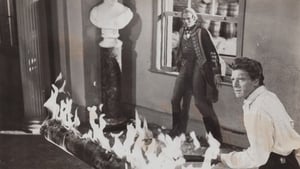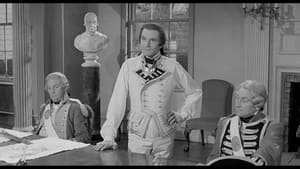Video Sources 0 Views
- Watch trailer
- The Devil's Disciple 1959 Colorized


Synopsis
Table of Contents
Toggle
Step back into the American Revolutionary War with The Devil’s Disciple, a 1959 British-American film now beautifully colorized for a captivating viewing experience. Directed by Guy Hamilton, this adaptation of George Bernard Shaw’s play stars Burt Lancaster, Kirk Douglas, and Laurence Olivier, blending comedy, war, and historical drama into one unforgettable story. Perfect for fans of classic cinema and those seeking a fresh perspective on a timeless tale, this HD download brings a vibrant new dimension to a beloved film. Other titles include: Djavolov ucenik
The Devil’s Disciple tells the story of Richard “Dick” Dudgeon (Kirk Douglas), an outcast in colonial New Hampshire, and Reverend Anthony Anderson (Burt Lancaster), a local minister. After Dick’s father is mistakenly hanged by the British, Dick’s rebellious nature clashes with the town’s loyalties.
The plot thickens when Anderson warns Dick that the British may arrest him for retrieving his father’s body. Seeking refuge, Dick finds himself in Anderson’s home. However, British soldiers mistake Dick for Anderson and arrest him. Dick allows them to take him away without revealing his true identity, leading to a series of humorous and dramatic events. Meanwhile, Anderson, initially a man of peace, undergoes a transformation and embraces his revolutionary side. He becomes a key figure in the rebellion, leading to a climactic confrontation with General Burgoyne (Laurence Olivier). Ultimately, The Devil’s Disciple explores themes of identity, sacrifice, and the revolutionary spirit through a unique blend of comedy and historical drama.
The film boasts a stellar cast, bringing depth and humor to their respective roles:
-
Burt Lancaster as Reverend Anthony Anderson
-
Kirk Douglas as Richard “Dick” Dudgeon
-
Laurence Olivier as General John Burgoyne
-
Janette Scott as Judith Anderson
-
Eva Le Gallienne as Mrs. Dudgeon
-
Harry Andrews as Major Swindon
-
Basil Sydney as Lawyer Hawkins
-
George Rose as British sergeant
-
Neil McCallum as Christopher (Christie) Dudgeon
The Devil’s Disciple blends genres, falling primarily into the category of war comedy, with strong elements of historical drama and satire. Its witty dialogue and farcical situations provide a humorous take on the serious events of the American Revolutionary War.
Released in 1959, The Devil’s Disciple is an adaptation of George Bernard Shaw’s 1897 play, known for its sharp wit and satirical commentary on war and society. The film was produced during a period when Hollywood was exploring historical themes with a mix of spectacle and social commentary. While the film simplifies some of Shaw’s complex ideas, it remains a significant adaptation that captures the spirit of the original play.
This colorized version of The Devil’s Disciple has been carefully restored using advanced digital techniques, enhancing the visual appeal while preserving the film’s original charm. The colorization process involved meticulous analysis of the original black and white footage, with attention to historical accuracy in costume and set design. Advanced algorithms were used to select appropriate colors and enhance image details, bringing a new level of vibrancy to the characters and settings. This painstaking process revitalizes the film for modern audiences, offering a fresh way to experience this classic tale.
-
: Guy Hamilton, Alexander Mackendrick
-
: John Dighton, Roland Kibbee (Based on the play by George Bernard Shaw)
-
: Jack Hildyard
-
: Richard Rodney Bennett
-
: Hecht-Hill-Lancaster Productions, Bryna Productions
-
: United Artists
-
: 82 minutes
-
: MP4
-
: HD (1080p)
-
: Compatible with most devices, including smartphones, tablets, computers, and smart TVs.
The Devil’s Disciple (1959) has been praised for its strong performances, witty dialogue, and unique blend of comedy and historical drama. While some critics noted that the film simplifies Shaw’s original play, it remains a highly entertaining and thought-provoking adaptation. The film’s exploration of identity, sacrifice, and the revolutionary spirit continues to resonate with audiences today.
-
: What is The Devil’s Disciple about?
-
A: The Devil’s Disciple is a war comedy set during the American Revolutionary War, about an outcast who is mistaken for a minister.
-
-
: Is The Devil’s Disciple (1959) a faithful adaptation of Shaw’s play?
-
A: While the film simplifies some of Shaw’s complex ideas, it captures the spirit of the original play.
-
-
: Is this version of The Devil’s Disciple colorized?
-
A: Yes, this version has been professionally colorized to enhance the viewing experience.
-
-
: What makes The Devil’s Disciple interesting for classic film fans?
-
A: The Devil’s Disciple offers a unique blend of comedy, historical drama, and strong performances from Burt Lancaster, Kirk Douglas, and Laurence Olivier.
-
-
: What is the download format?
-
A: The download format is MP4, which is compatible with most devices.
-
-
: What resolution is the download?
-
A: The resolution is HD (1080p), providing a high-quality viewing experience.
-
Watch The Devil’s Disciple Today!













